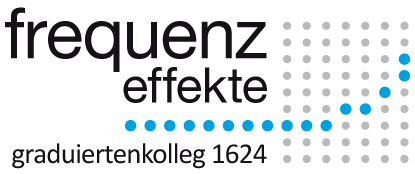Laura Cuthbertson
Beyond Tense and Aspect: Temporal Conceptualisation in Present-Day Spoken English
| Erstbetreuer | Prof. Dr. Dr. h. c. Christian Mair |
| Zweitbetreuer | Prof. Dr. Stefan Pfänder |
| Abstract | There exists a close cognitive relationship between space and time, evidenced in language by the often parallel surface structures of spatiotemporal constructions. The focus of this project is the cognitive coordinate system used to locate a target event (TE) relative to a reference point (RP) on the mental timeline in order to communicate temporal relations; this is achieved via temporal frames of reference (t-FoRs), a range of strategies to encode temporal conceptualisations and whose linguistic surface realisations are (spatio-)temporal constructions. Previous research on time in linguistics has focused primarily on its grammatical encoding via tense, aspect and modality (TAM) systems, whereas research on frames of reference stems from psychology. This project aims to develop a taxonomy of t-FoRs, based on conversational language data taken from the British National Corpus (BNC), by establishing the usage frequencies of conventionalised lexicogrammatical references to time. Those that are used most frequently constitute the preferred ways in which time is conceptualised by speakers of present-day spoken English. The derived t-FoR taxonomy can then be compared to current t-FoR taxonomies to determine how successfully they account for the data, as well as to the spatial FoR (s-FoR) taxonomy developed by Levinson (1996); t-FoRs are analogous, although not entirely reducible, to s-FoRs used to locate objects in space and, thus far, a thorough account of differences in their application is lacking. By means of collocational analyses, the usage profiles and associated temporal concepts of temporal expressions can be determined. For ambiguous spatiotemporal constructions, the strength with which these constructions are tied to spatial or temporal contexts can be quantitatively established, in addition to revealing any conceptual similarities between collocates and the schema that license a construction’s application in both domains. The grammaticalisation of temporal expressions and the presence of any short-term diachronic change will then be explored by comparing data from the BNC 1990 to the more recent BNC 2014, which would be evidenced by shifting usage profiles. Spatiotemporal constructions could either be experiencing ongoing grammaticalisation and abstraction or specialisation to a particular conceptual category, ie., space or time. Until now, it has been assumed that FoRs and their entailing conceptualisations are stable within a community of speakers. Although the taxonomy itself is unique to the English language, the underlying temporal conceptualisations are cross-linguistically transferable, while the usage profiles of (spatio-)temporal expressions could act as a ‘conceptual guide’ for learners of English, particularly with reference to prepositions given that they are a notoriously difficult area of language to master. |
| Disziplin | English Studies |
| Sprachen | English |
| Forschungsrichtung | corpus linguistics, cognitive linguistics, psycholinguistics |
| Schlüsselbegriffe | temporal cognition, frames of reference, space-time mapping, cognitive metaphor theory, grammaticalisation. |


